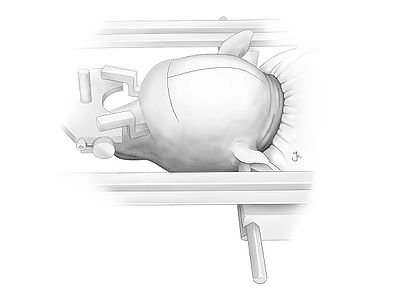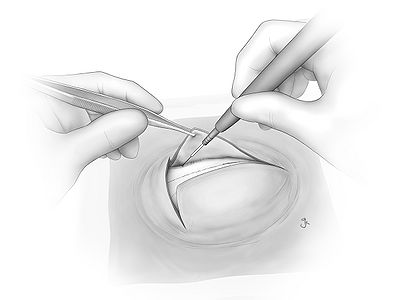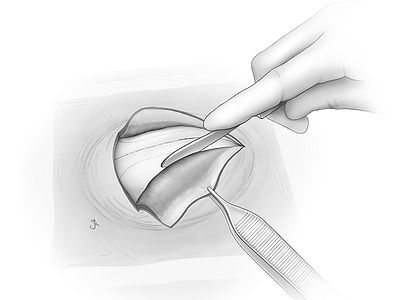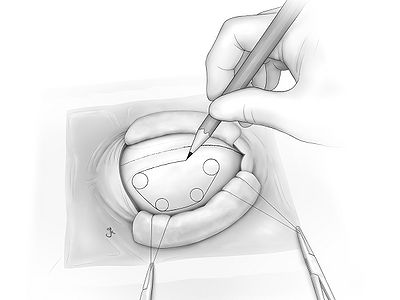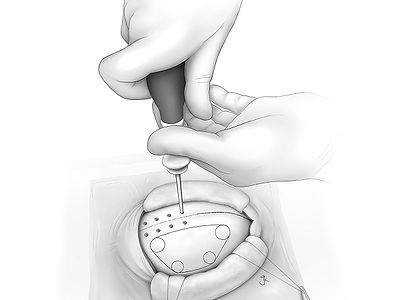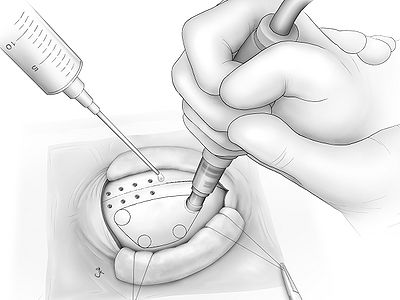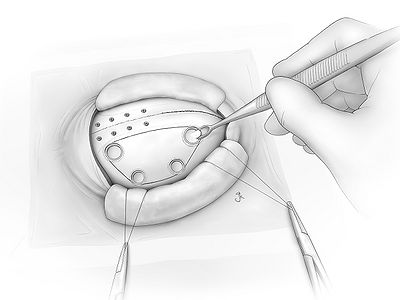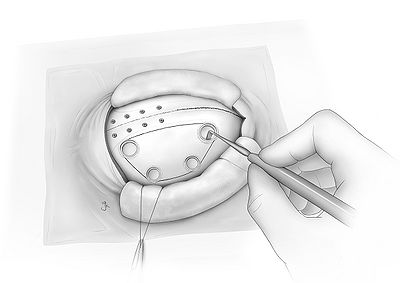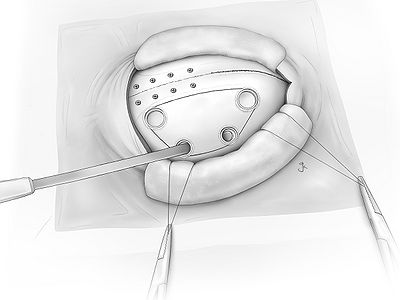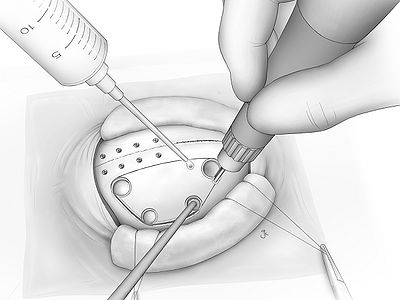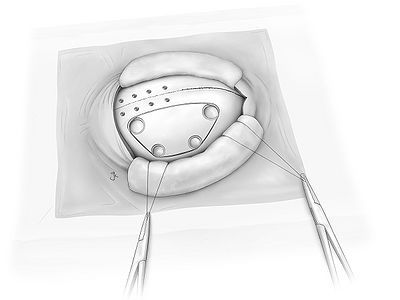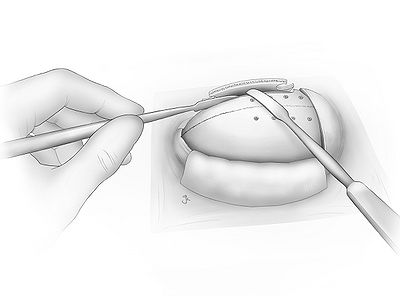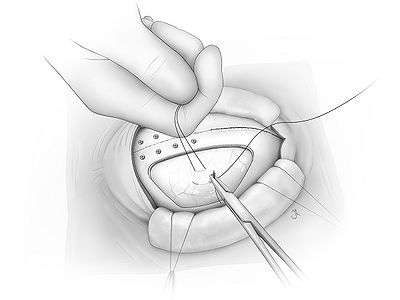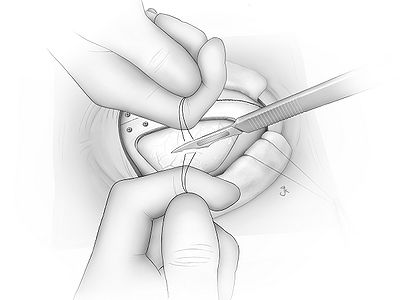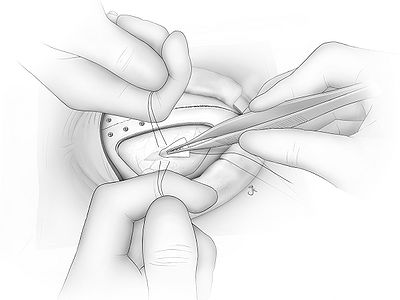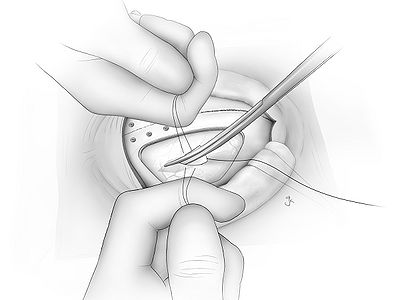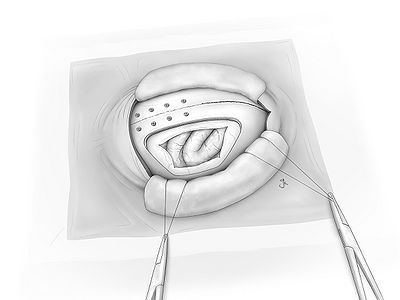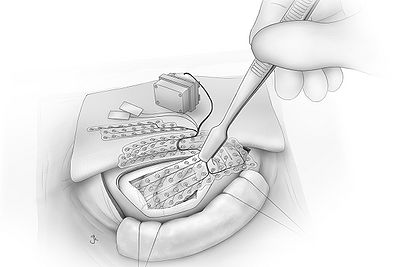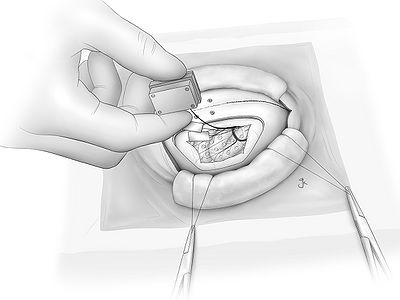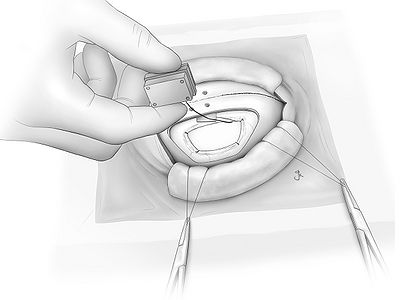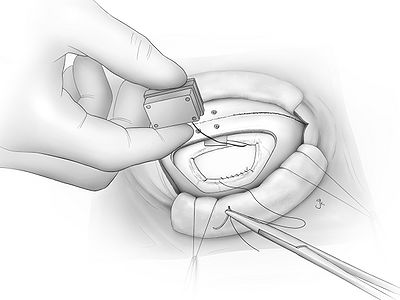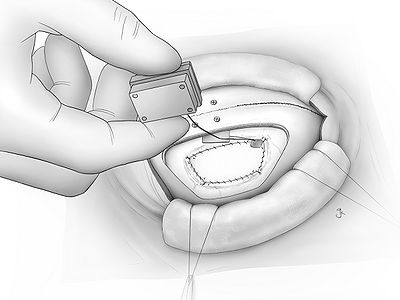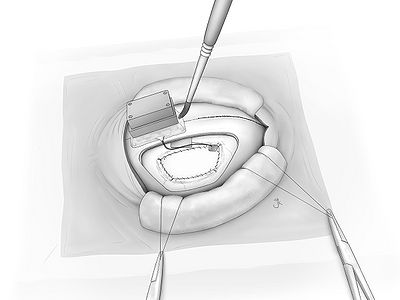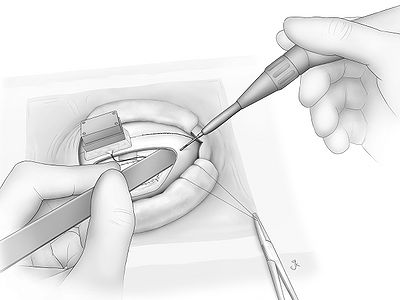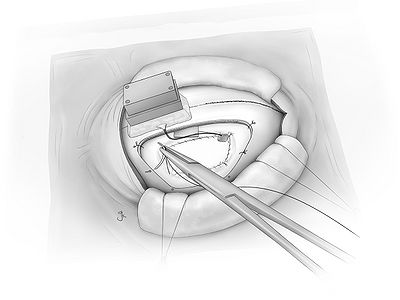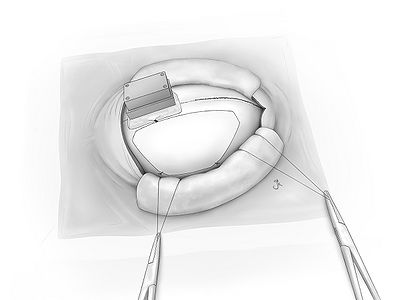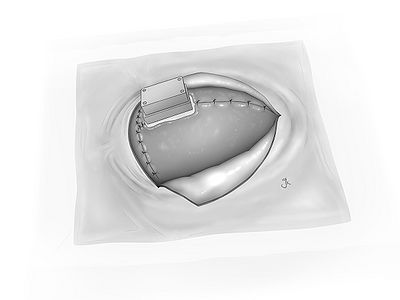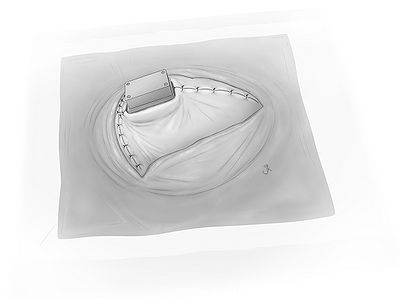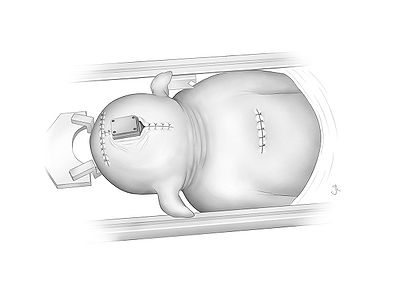Difference between revisions of "Surgical Procedure"
From NeuroTychoWiki
NaotakaFujii (talk | contribs) |
(Undo revision 2237 by LeannaCameron (talk)) |
||
| (14 intermediate revisions by 5 users not shown) | |||
| Line 2: | Line 2: | ||
|- Illustration || Procedures | | |- Illustration || Procedures | | ||
|- | |- | ||
| − | |[[File: | + | |[[File:Fig01.jpg|400px]] || Anesthetize a monkey and fix the head on stereotaxic. Attach all of electrode for monitoring vital signal during surgery. Disinfect all of surgical area and cover the area with sterilized drapes. |
|- | |- | ||
| − | |[[File: | + | |[[File:Fig02.jpg|400px]] || Incise a skin with a cautery knife. The galea aponeurotica is cut at the center and gently peeled off from skull with the knife. |
|- | |- | ||
| − | |[[File: | + | |[[File:Fig03.jpg|400px]] || The galea aponeurotica and temporal muscle are removed from skull with scraper until all of surgical area is exposed. Tissues on skull surface have to be wiped out and all of bleeding has to be completely stopped. |
|- | |- | ||
| − | |[[File: | + | |[[File:Fig04.jpg|400px]] || Edge of the skin and the muscles are wrapped with moistened gauze. The gauze has to be kept moistened during the surgery.Traction sutures are put at skin edge under the gauze and the suture is pulled out to ensure a sufficient working space. Drawing a planned area of craniotomy on the skull with a pencil. Circle is where burr hole will be put and lines are where craniotome will cut the skull. |
|- | |- | ||
| − | |[[File: | + | |[[File:Fig05.jpg|400px]] || Titanium screws are implanted as an anchor for fixing a connector on the skull. This can be done after completing ECoG implantation, but it might be safer to do before craniotomy. |
|- | |- | ||
| − | |[[File: | + | |[[File:Fig06.jpg|400px]] || Burr holes are made with a perforator. The perforator has to be placed perpendicular to the bone surface and should not stop or pull out until the drill stops. It stops automatically when it penetrates the bone. During drilling the bone, drop a saline at the hole with syringe for cooling and washing out drilled bone. |
|- | |- | ||
|[[File:Fig07.jpg|400px]] || At the bottom of burr hole, there is a very thin bone flap left. Remove the flap carefully with curette. | |[[File:Fig07.jpg|400px]] || At the bottom of burr hole, there is a very thin bone flap left. Remove the flap carefully with curette. | ||
|- | |- | ||
| − | |[[File:Fig08.jpg|400px]] || Confirm no bone flap is left and dura has to be fully exposed under burr hole. Gently peel off dura from skull and make epidural space around burr hole. This has to be done in all burr | + | |[[File:Fig08.jpg|400px]] || Confirm no bone flap is left and dura has to be fully exposed under burr hole. Gently peel off dura from skull and make epidural space around burr hole. This has to be done in all burr holes. |
|- | |- | ||
|[[File:Fig09.jpg|400px]] || Epidural spaces between burr holes are connected. This tunnel will be a working space for Craniotome. Make sure all of epidural spaces underneath lines of bone incision are connected. | |[[File:Fig09.jpg|400px]] || Epidural spaces between burr holes are connected. This tunnel will be a working space for Craniotome. Make sure all of epidural spaces underneath lines of bone incision are connected. | ||
| Line 40: | Line 40: | ||
|[[File:Fig19.jpg|400px]] || Place reference electrode in subdural space (between ECoG sheet and dura) and ground electrode in epidural space (between dura and skull). | |[[File:Fig19.jpg|400px]] || Place reference electrode in subdural space (between ECoG sheet and dura) and ground electrode in epidural space (between dura and skull). | ||
|- | |- | ||
| − | |[[File:Fig20.jpg|400px]] || Cut artificial dura that fits to the size of dura opening. Insert artificial dura in subdural space. Rim of the artificial dura has to be covered by dura. Put sutures(PBS: a thread made of biodegradable plastic) at corners. | + | |[[File:Fig20.jpg|400px]] || Cut artificial dura that fits to the size of dura opening. Insert artificial dura in subdural space. Rim of the artificial dura has to be covered by dura. Put sutures (4-0 PBS: a thread made of biodegradable plastic) at corners. |
|- | |- | ||
| − | |[[File:Fig21.jpg|400px]] || Each rim is sutured by uninterrupted suture. | + | |[[File:Fig21.jpg|400px]] || Each rim is sutured by uninterrupted suture with PBS. |
|- | |- | ||
|[[File:Fig22.jpg|400px]] || Wrap a hole where wires are coming out from subdural space with small piece of fascia and suture it to dura securely for preventing spinal fluid leakage. | |[[File:Fig22.jpg|400px]] || Wrap a hole where wires are coming out from subdural space with small piece of fascia and suture it to dura securely for preventing spinal fluid leakage. | ||
|- | |- | ||
| − | |[[File:Fig23.jpg|400px]] || | + | |[[File:Fig23.jpg|400px]] || Fix a connector with covering with dental acrylic on screws. |
|- | |- | ||
| − | |[[File:Fig24.jpg|400px]] || | + | |[[File:Fig24.jpg|400px]] || Drill holes at multiple points around bone edge. These holes will be used for suturing dura to skull. |
|- | |- | ||
| − | |[[File:Fig25.jpg|400px]] || | + | |[[File:Fig25.jpg|400px]] || Suture dura to bone edge. These sutures will string dura from skull and prevent epidural hemorrhage spreading outside of bone edge. Also it will prevent pushing brain against increased intracranial pressure. |
|- | |- | ||
| − | |[[File:Fig26.jpg|400px]] || | + | |[[File:Fig26.jpg|400px]] || Cover the area by artificial dura to prevent adhesion between dura and surrounding tissues. Two sutures at lateral end will fix the cover. |
|- | |- | ||
| − | |[[File:Fig27.jpg|400px]] || | + | |[[File:Fig27.jpg|400px]] || Muscle and fascia are sutured with 4-0 Vycril. |
|- | |- | ||
| − | |[[File:Fig28.jpg|400px]] || | + | |[[File:Fig28.jpg|400px]] || Skin closed with 4-0 nylon. |
|- | |- | ||
| − | |[[File:Fig29.jpg|400px]] || | + | |[[File:Fig29.jpg|400px]] || Make a subcutaneous pocket between scapulas and put bone piece in it. |
|- | |- | ||
| − | |[[File:Fig30.jpg|400px]] || | + | |[[File:Fig30.jpg|400px]] || Close the pocket with 4-0 nylon. This bone will be taken out one to two weeks after the initial surgery and put it back to the original location. |
|} | |} | ||
| − | Surgical illustrations | + | Surgical illustrations ©2011 [http://www.junakurihara.com Juna Kurihara] |
Latest revision as of 17:48, 19 February 2014
Surgical illustrations ©2011 Juna Kurihara

